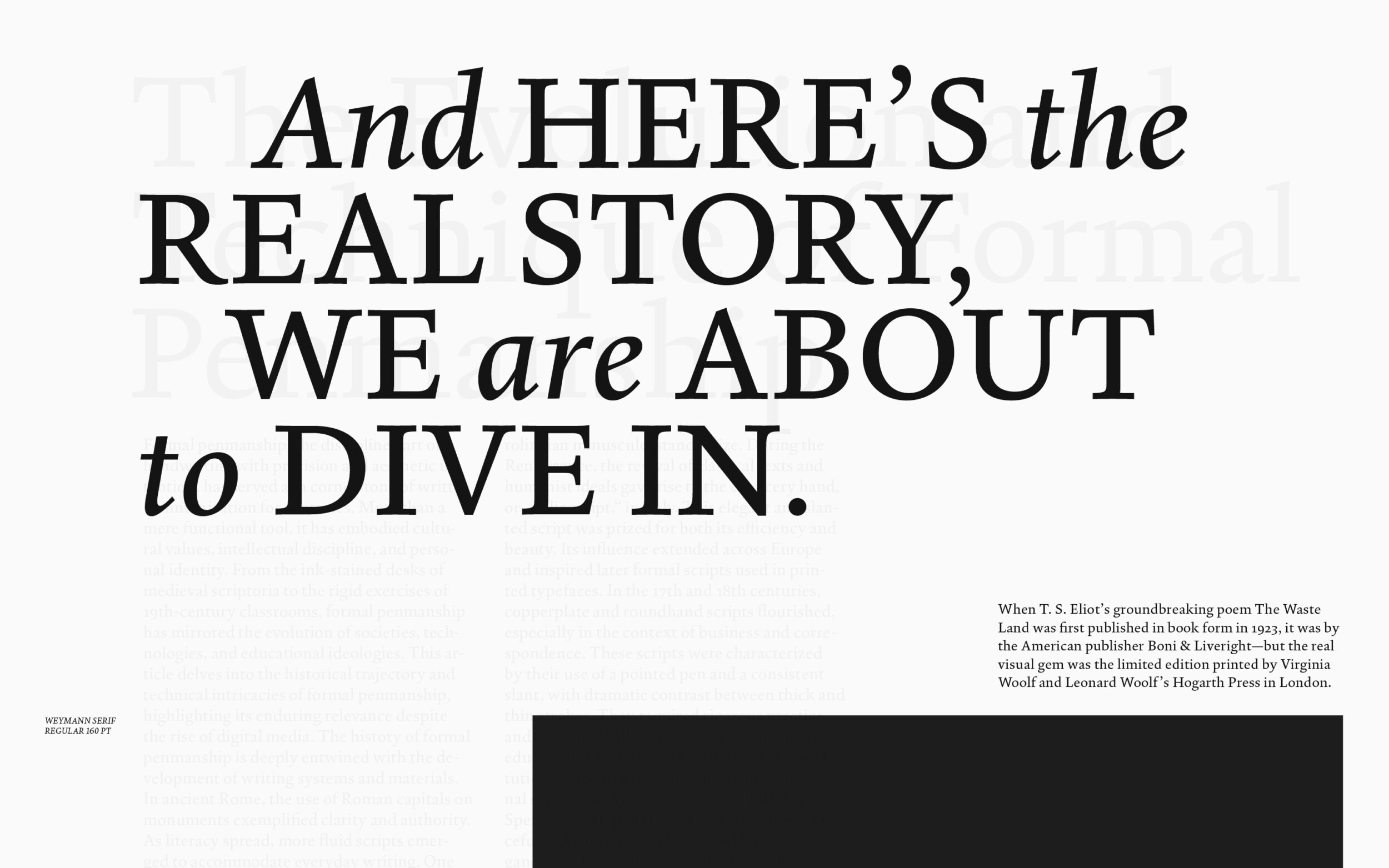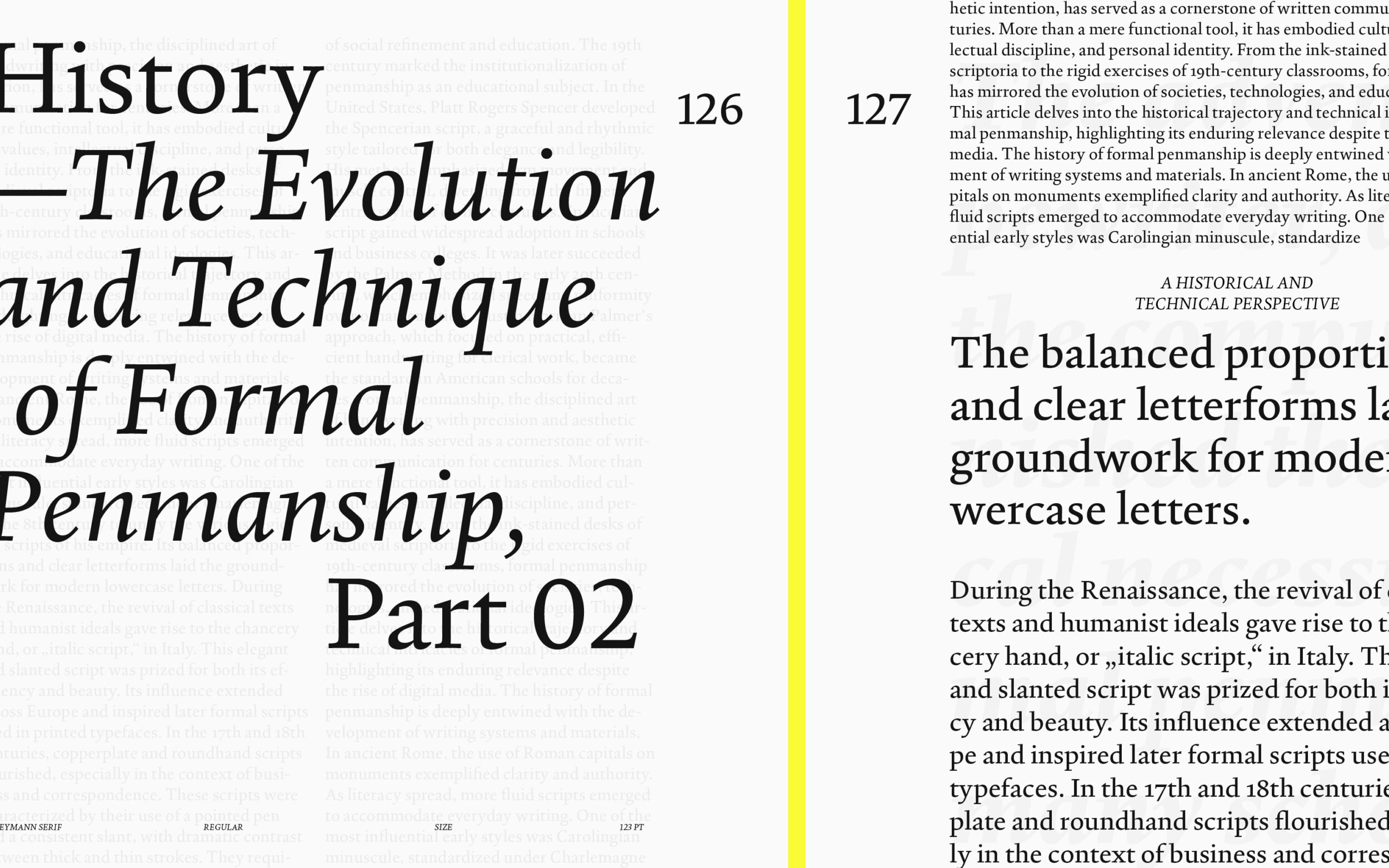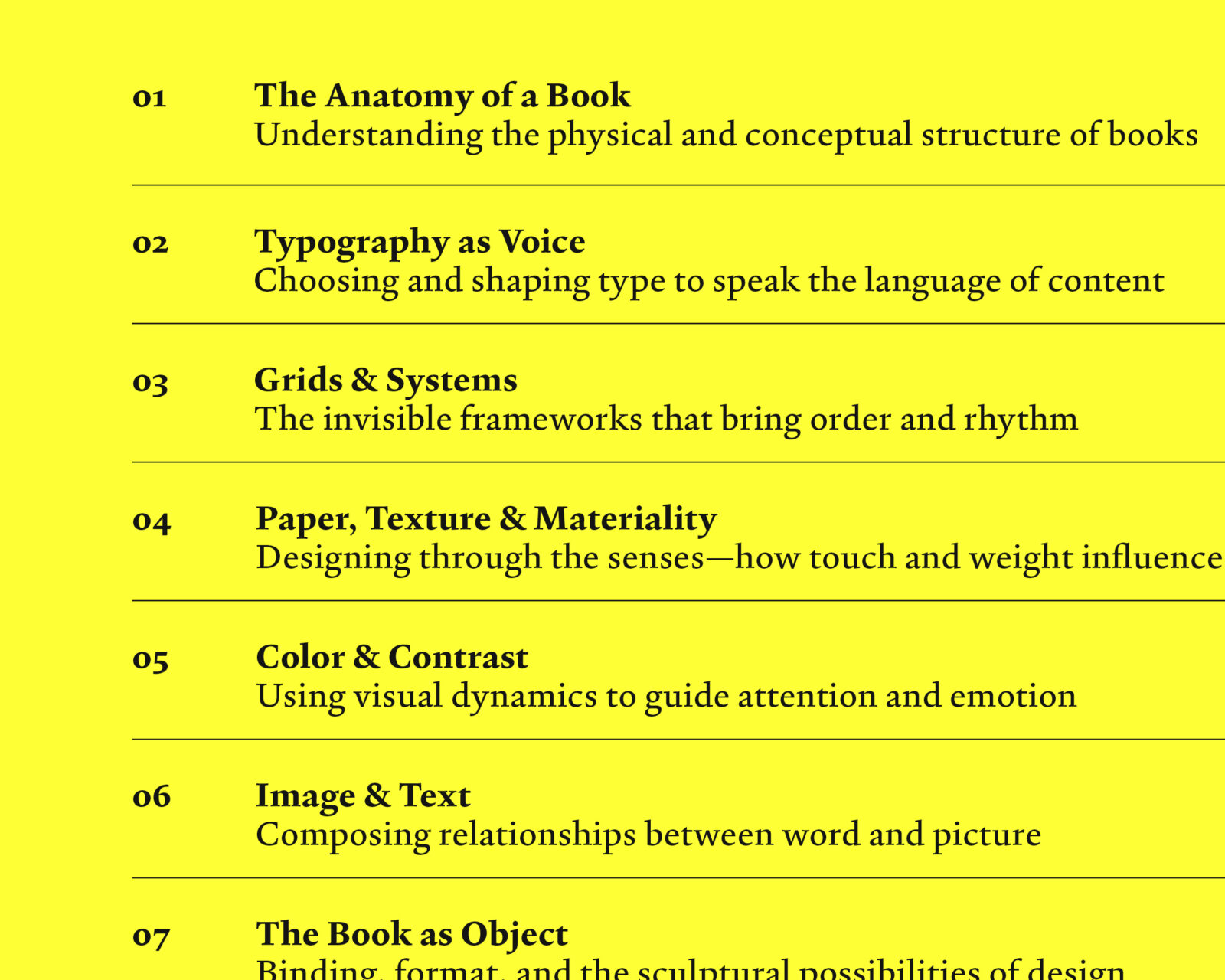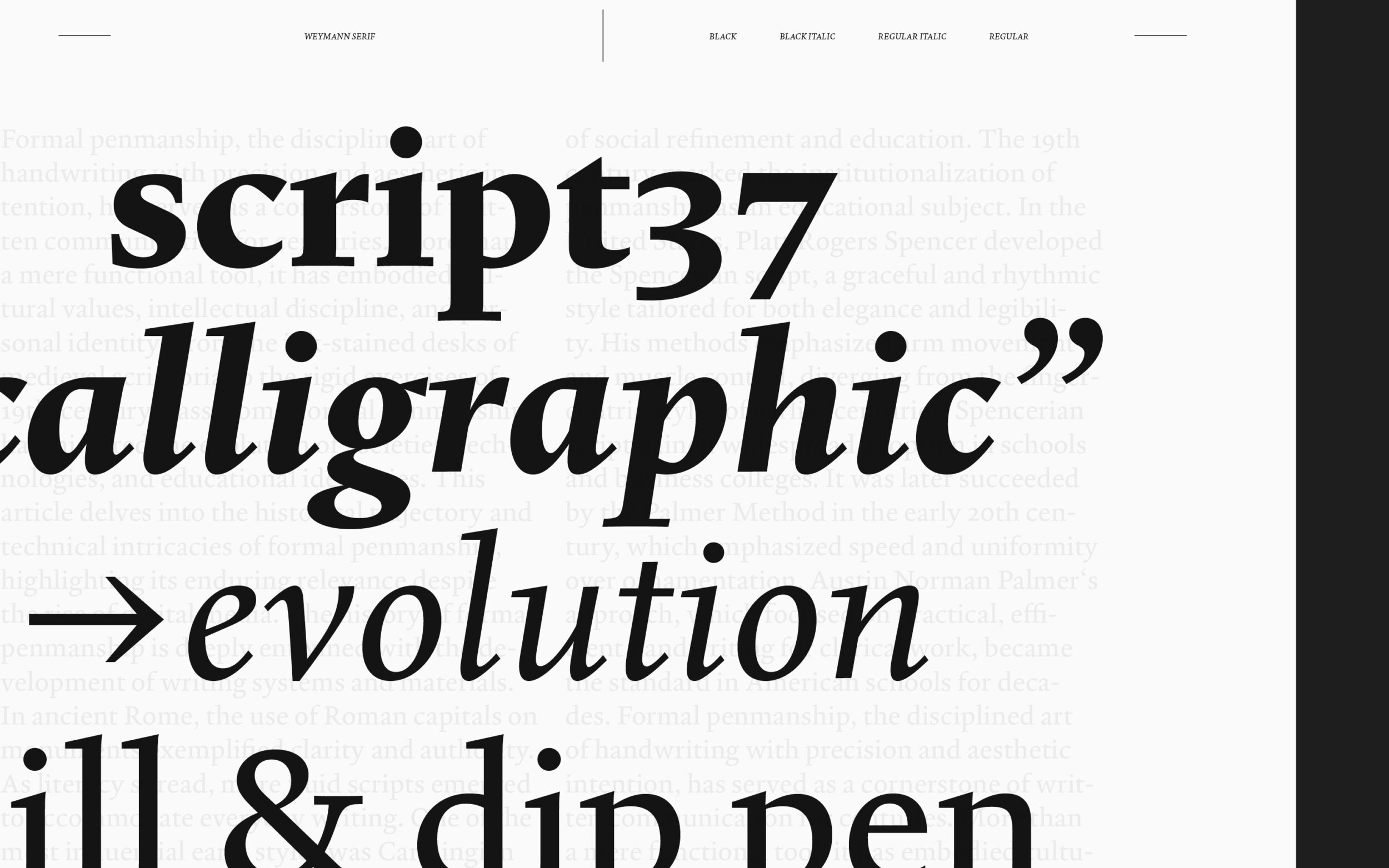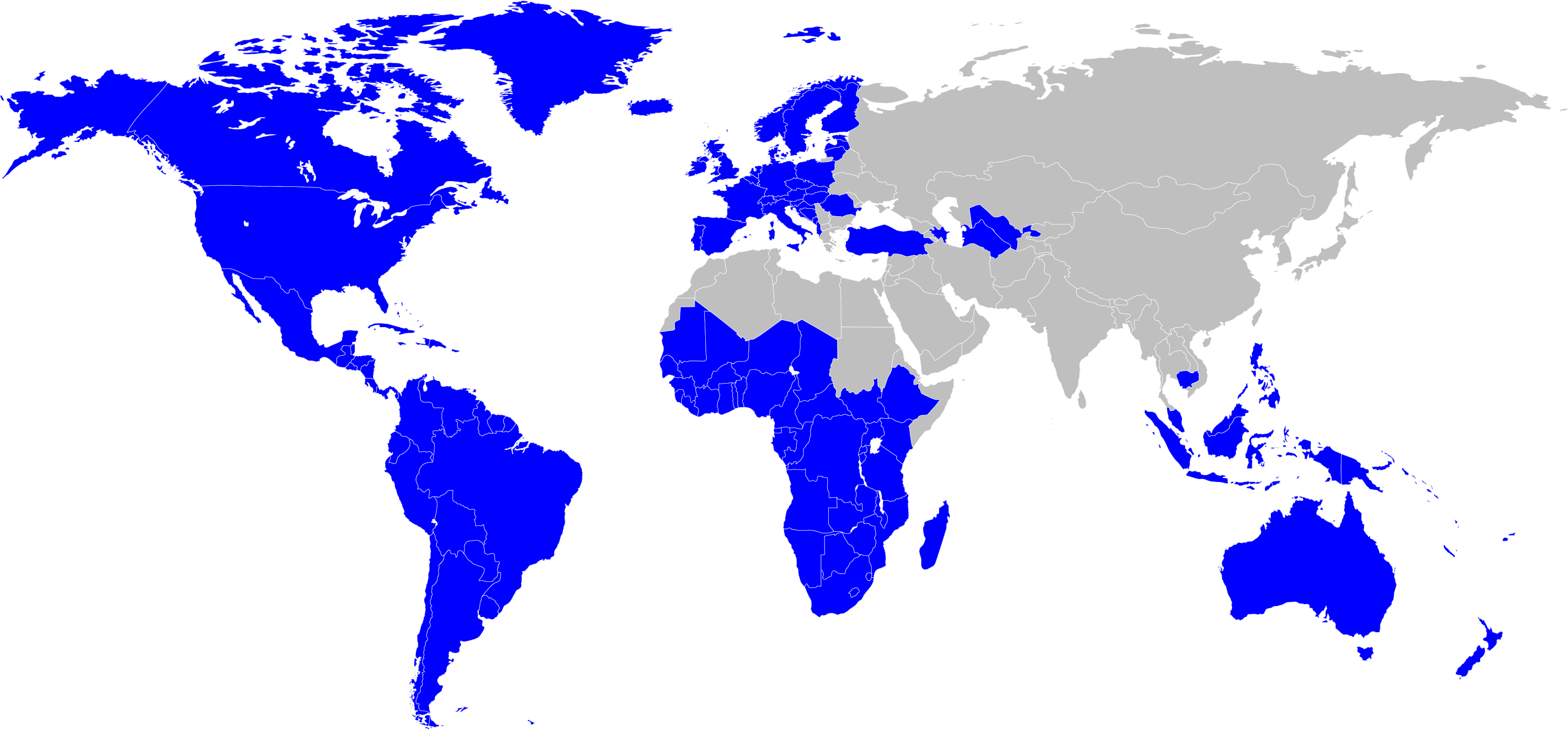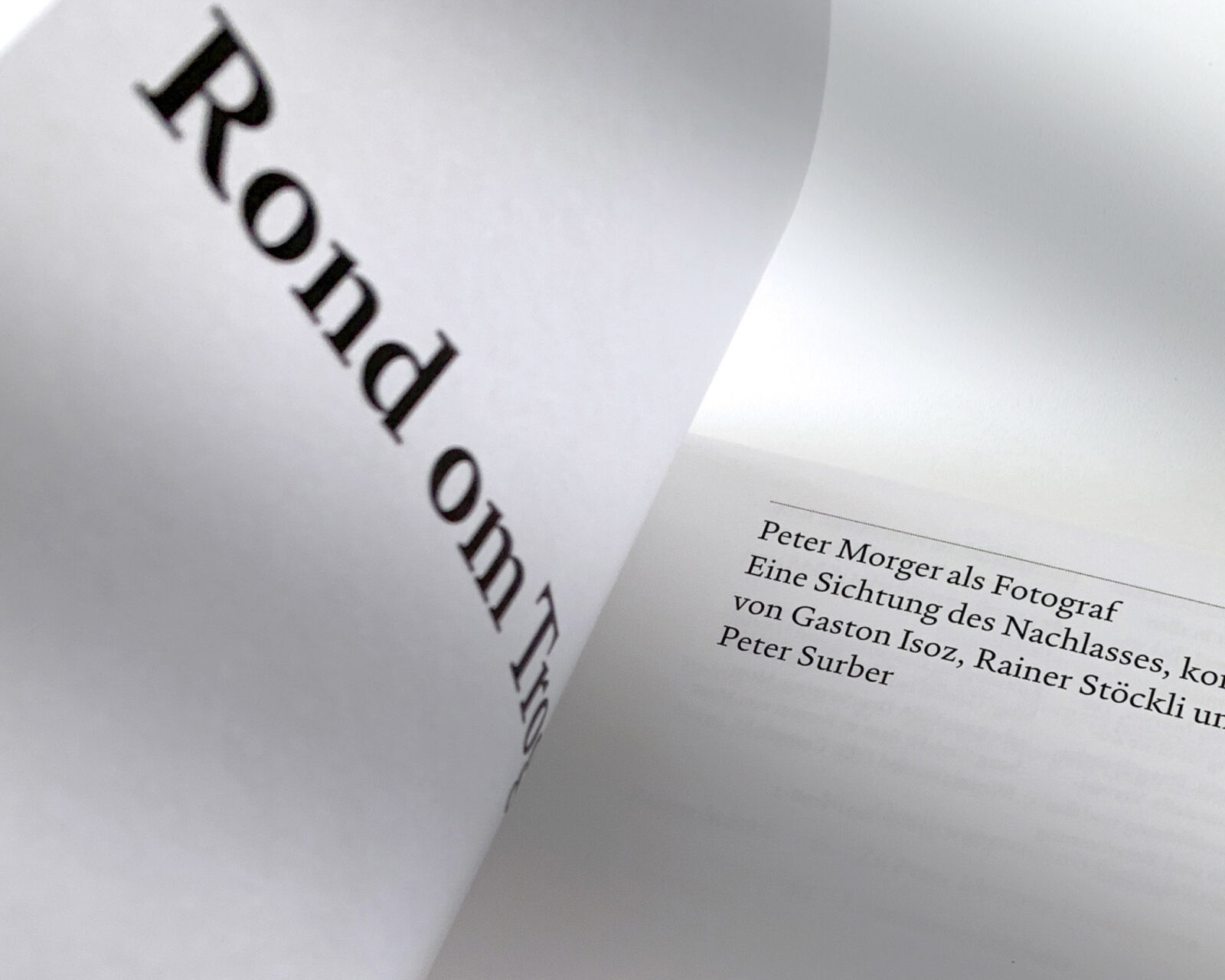Starting
€ 50.00 € 25.00
Single style from
€ 50.00 € 25.00
Complete family from€ 360.00 € 180.00
Try
Buy
Complete family from
Weymann Serif Variable
Weymann Serif
Weymann Serif
A modern approach on a traditional matter, testing the fine line between the influence of a writing instrument whilst maintaining a clearly defined typographic form. The double pencil was the most influential writing tool. (1892—1978) This approach allowed for greater speed and freedom in executing the letterforms compared to using a broad nib. In this way, the tool not only shaped the gesture of writing but also expanded the expressive potential of the letterforms themselves.
Weymann Serif
Read once. Remembered always.
Weymann Serif
It is balanced and unflappable in books, journals, catalogues and essays; at ease in modern editorial work; and on the cover of a traditional volume you return to again and again.
Weymann Serif
“calligraphic”
